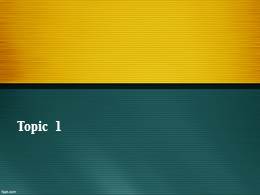Copy and paste the code below into your blog post or website
Copy URL
Embed into WordPress (learn more)
Comments
comments powered by DisqusPresentation Slides & Transcript
Presentation Slides & Transcript
Topic 1
Internet risks – give examples of four things that can go wrong with a transactional site?
"We know electronic commerce carries also a number of significant risks that could block the extraordinary growth and progress from taking place. There are almost no international agreements or understanding about electronic commerce. Many of the most basic consumer and copyright protections are missing from cyberspace. In many ways, electronic commerce is like the Wild West of the global economy".(Clinton, 7/7/97)
As purchasing on internet, some products may actually be dodgy or not as they looked over the net.
- Some people find it hard to hand over bank card details as they feel it is unsafe.
- Users of the site are unaware of the security of the website, which can make it hard for some to use these types of sites.
- Products which are sold over the internet may not be to the customers satisfaction when it arrives, as it may of been shown to be a lot better on the site then in real life.
E-commerce
E-Commerce includes commerce and business activities that are performed over the electronic network (both fixed and mobile networks) including upstream and downstream supply chain activities and consumer purchases that are initiated through electronic means.(Clarke,1998; DCITA,1999, USDC, 1999)
E-business
E-business is defined as any form of commercial transaction involving goods and services conducted over a digital medium.
What is the difference between buy side and sell side e-Commerce?
Selling products and services over the internet to the organization's clients is called sell side where as buying resources for the organization's need from suppliers is called buy side (chaffey,2008).
Describe the different types of e-Business?
B2B (Business to Business): A transaction that occurs between two companies, as opposed to a transaction involving a consumer. The term may also describe a company that provides goods or services for another company.
B2C (Business to Consumer): A transaction that occurs between a company and a consumer. The term may also describe a company that provides goods or services for consumers.
B2G (Business to Government): Feedback to government businesses and NGO's.
C2B (Consumer to Business): Means through which consumers decide what they want to pay, and the vendors decide whether or not to accept.
C2C (Consumer to Consumer): Means through which consumers interact with other consumers through, for example, online auctions.
C2G (Consumer to Government): Feedback to government through pressure group or individual sites.
G2B (Government to Business): Refers to a government agency communicating with or purchasing products or services from a business.
G2C (Government to Consumer): The communication link between a government and private individuals or residents.
G2G (Government to Government): is the electronic sharing of data and/or information systems between government agencies, departments or organizations. The goal of G2G is to support e-government initiatives by improving communication, data access and data sharing.
Which digital technology has the highest penetration rate? Explain and source your answer?
The digital technology which has the highest penetration rate is mobile phones. The impressive growth in the number of mobile cellular users is mainly due to developments in some of the world’s largest markets. The economies of Brazil, Russia, India and China are expected to have an increasingly important impact in terms of population, resources and global GDP share. These economies alone are expected to account for over 1.3 billion mobile subscribers by the end of 2008.
International Telecommunication Union recently published two regional reports for Africa and Asia, which indicate how mobile technology is changing peoples’ lives. Apart from providing communication services to previously unconnected areas, mobile applications have opened the doors to innovations such as m-commerce to access pricing information for rural farmers and the use of mobile phones to pay for goods and services.
List Four drivers to adoption of sell-side e-commerce by business.
Increasing speed with which supplies can be obtained
Increasing speed with which goods can be dispatched
Reduced sales and purchasing costs
Reduced operating costs
Corporate image communication
Four barriers to adoption of sell-side e-commerce by business .
Start up cost might be high.
Lack of time and resource can effect the selling of products
Unaware about the use of internet and methods to identify the authenticity of the website.
Reluctance on the part of the supplier to enter into online transaction might affect the selling process.
What are some examples of Digital information?
Blue Ray
CD
DVD
Smart Phones( Mobile Phones)
Digital Camera
Internet
What is the semantic web? Are we there yet?
Semantic web is a web data. As in our day today life we all use lots of data but not all of them are part of web. For example, I can see my bank statements on the web, and my photographs, and I can see my appointments in a calendar. But can I see my pic’s in a calendar to see what I was doing when I took them? Can I see bank statement lines in a calendar? Why not? Because we don't have a web of data. Because data is controlled by applications, and each application keeps it to itself, well the vision of semantic web is to expand stretch of web from documents to data. And this data can accessed from anywhere just by using web architecture using URI’S, common framework that would allow access to data. Needless to say there are products or you can say applications available but people have not yet accepted the change. Still Search engines dominates.
Bibliography
http://www.davechaffey.com/E-business/C1-Introduction/E-business-E-commerce-defined
http://www.w3.org/RDF/FAQ
http://www.investorwords.com/364/B2B.html
Clinton, B. (7/7/97). Remarks announcing the electronic commerce initiative. Weekly Compilation of Presidential Documents, 33(27), 4
http://books.google.com.au/books?id=hE0BTsT6g0kC&pg=PA150&dq=e-commerce+definition&hl=en&sa=X&ei=jM1SUdv2LMnGkQX5iIDgDw&ved=0CEgQ6AEwAg#v=onepage&q=e-commerce%20definition&f=false
http://books.google.com.au/books?id=ybzS-yylJfAC&pg=PA448&dq=E-business+definition&hl=en&sa=X&ei=jtFSUYSxMZCkkgW69YH4Bg&ved=0CEAQ6AEwAQ#v=onepage&q=E-business%20definition&f=false
Bibliography
http://whatis.techtarget.com/definition/government-to-government-G2G
http://highered.mcgraw-hill.com/sites/dl/free/0073195588/438531/sample_chapter3.pdf
http://www.davechaffey.com/E-business/C1-Introduction/E-business-E-commerce-defined
http://www.investorwords.com/364/B2B.html
http://whatis.techtarget.com/definition/government-to-government-G2G
http://highered.mcgraw-hill.com/sites/dl/free/0073195588/438531/sample_chapter3.pdf
http://www.itu.int/newsroom/press_releases/2008/29.html
http://www.itu.int/ITU-D/ict/statistics/ict/graphs/ICT_penetration_2007.jpg
http://suncoresolar.com/market_projections.php
Bibliography
http://www.itu.int/ITU-D/cyb/publications/archive/wmrcjune00/ntoko.html
www.avyg86.dsl.pipex.com/ecom/Week%201.ppt
http://www.w3.org/RDF/FAQ







